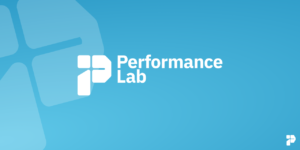In the vast ocean of website development, WordPress stands as a lighthouse guiding millions of users through the tumultuous waves of online content creation. However, beneath the surface lies a complex ecosystem defined by the distinction between WordPress.org and WordPress.com – a division often overlooked by the casual observer but fiercely debated among the platform’s enthusiasts and developers.
Introduction:
Ask any newcomer about the disparity between WordPress.org and WordPress.com, and the response is often a puzzled shrug. Yet, within the community of seasoned users and developers, this demarcation represents a fundamental divide between the open-source ethos of WordPress and the commercial endeavors of Automattic, the company behind the hosted CMS platform.
The Sacred Line and Its Blurry Boundaries:
This division, though sacred in principle, remains shrouded in ambiguity. Recent events, such as WordPress.com’s replication of the WordPress.org Plugin Directory, have reignited tensions within the community. The perception that plugin pages on WordPress.com could potentially overshadow those on WordPress.org in search results underscores the underlying conflict between communal contributions and commercial interests.
The Nuanced Debate:
At its core, the debate revolves around the exploitation of the open-source community’s efforts for corporate gain. While WordPress.org advocates decry the leveraging of volunteer labor for proprietary ends, proponents of WordPress.com argue for the broader distribution of community-developed plugins to benefit all parties involved.
Shifting Focus:
However, amidst these contentious discussions, the true essence of the issue often gets obscured. Rather than fixating on labor disputes and discord, the focus should shift towards addressing WordPress’s positioning problem. By delineating clearer distinctions between business endeavors and community-driven initiatives, more constructive dialogues can emerge.
A Time for Repositioning:
The evolution of WordPress, particularly with the advent of the Gutenberg project, heralds a transformative era in the platform’s history. As WordPress transitions into a visually-driven editing experience, there arises an opportune moment to redefine its identity and purpose within the digital landscape.
Rethinking Co-Branding:
The current conflation of WordPress.com and WordPress.org under a single brand exacerbates existing tensions. Perhaps it is time to reconsider the efficacy of co-branding strategies and explore alternative paths that foster greater clarity and alignment with respective objectives.
Looking Ahead:
Ultimately, the ongoing debate surrounding WordPress’s identity necessitates a candid examination of its future trajectory. Whether through rebranding efforts or enhanced co-branding strategies, the goal remains the same – to uphold the integrity of WordPress’s legacy while embracing the evolving needs of its diverse user base.
Conclusion:
As we navigate the ever-changing currents of WordPress, let us not lose sight of the principles that have guided its journey thus far. By fostering a deeper understanding of the nuances between WordPress.org and WordPress.com, we can chart a course towards a more cohesive and inclusive ecosystem that honors both its communal roots and commercial endeavors.




